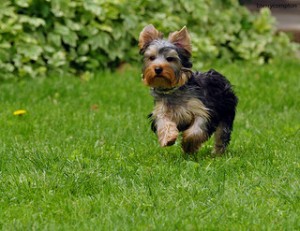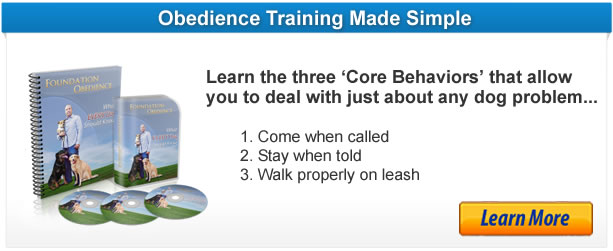 There are some dogs that will become amazing with only the casual recall. Even in the face of big distractions and off the leash they will reliably come every time.
There are some dogs that will become amazing with only the casual recall. Even in the face of big distractions and off the leash they will reliably come every time.
There are many more dogs, however, that are prone to take off after distractions the second the leash disconnects from their collar. For those dogs I have designed the formal recall. The formal recall carries much more urgency. It is still designed to be fun for the dog, but it is also a mandatory command.
With the formal command I don’t want any thought process from the dog. I know that may sound strange but I don’t want the dog to think at all when he hears the word ‘here’. I want him to act reflexively. It’s just like when you are at the doctor’s office and he taps your leg with his little hammer. You don’t think about kicking, your leg just does it. With the formal recall that is what I’m going for. With every other command I don’t care if the dog thinks for a second before acting. With the ‘here’, however, your dog’s safety could rely on his split second action on hearing that command.
Let me tell you how you are going to create a reflex. Allow me to use an example. Let’s say that I choose a random word like ‘dog’. I say ‘dog’ then almost immediately I flick you in the shoulder. Now let’s say I repeat this word and action time and time again over the course of weeks or months. After a time I am going to simply say ‘dog’ and you are going to flinch. The reason being is that I have created a reflex in you. I have introduced a word followed immediately by an action. This has trained your mind to respond in such a way that you flinch.
We can create that same sensitivity to the word ‘here’ with your dog. What you are going to do is put your dog on a long line and training collar. Allow your dog to wander off by 10 or 20 feet. When he is least expecting it, say the word ‘here’ and then almost immediately give a little tug as you trot backwards. The second your dog begins to return start praising him. As he arrives to your side lay on some more praise. Release him and allow him to go back to sniffing or playing or whatever he was doing.
Let’s dissect this method:
- You say the word ‘here’. This is the introduction of a word on which we are able to build a reflex.
- You give a little tug and release. This is not a correction. It is simply the equivalent to the little flick that I referenced earlier.
- You trot backwards immediately. Have you ever gone to a park and seen someone running after their dog screaming for him to come back? Heck, maybe you’ve been that person. What that person doesn’t always realize is that if they were to turn and run the other way there is a half-way decent chance that their dog would chase them. Many dogs have this desire to approach a retreating person. By you trotting backwards a few steps you become more enticing and interesting to the dog. You won’t have to trot backwards forever, but in these beginning stages we really want to do everything to encourage the dog to come. Along those same lines I will often crouch down in an inviting position once my dog starts to come so that I am much more enticing to the dog. Whether it is trotting backwards, crouching down, or turning to the side my aim is to make myself more appealing to the dog.
- You praise. This may sound like common sense but many people forget this step. They give the little tug and start trotting backwards but remain mum. What their dog sees is a very stoic looking individual as they start to approach. This may make some dogs afraid so it is critical to start the praise the moment your dog takes the first step in your direction.
You must, must, must, must use distractions with this method. I can’t overstate that enough. One of my often said phrases is that ‘I rarely find a person who has a hard time getting their dog to come when called. I very frequently, however, find lots of people who can’t get their dogs to leave something and then come when called’.
The only difference between someone who has a well trained dog in calm circumstance and someone who has a well trained dog in distracting scenarios is that one person took advantage of distractions to make their dog better while the other was too lazy or shy to use distractions. Don’t be that lazy dog trainer. Go searching for things that are going to challenge your dog. I’ve been known to take ‘training field trips’ to the store, park, or other location. If I want my dog to be well behaved in normal, everyday scenarios I must tackle challenges bigger than what I may find over the course of a day.




Follow Us!